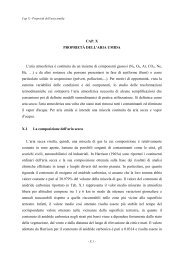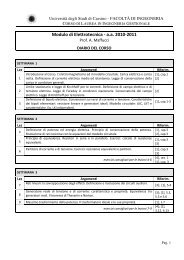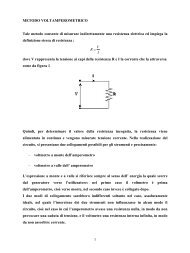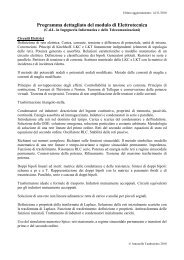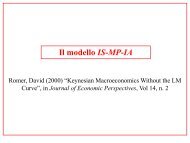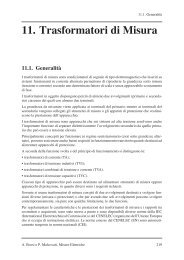Agilent Vector Signal Analysis Basics - Agilent Technologies
Agilent Vector Signal Analysis Basics - Agilent Technologies
Agilent Vector Signal Analysis Basics - Agilent Technologies
Create successful ePaper yourself
Turn your PDF publications into a flip-book with our unique Google optimized e-Paper software.
Interpreting vector diagrams<br />
When viewing signals in the I-Q plane, keep in mind that you are looking<br />
at the signal amplitude and phase relative to the carrier. The unmodulated<br />
carrier is the phase reference (0 degrees). In Figure 2-11, each of the detected<br />
symbols modulate the carrier at differing amplitudes and phases relative<br />
to the unmodulated carrier, but at the same frequency as the carrier. If the<br />
detected symbols were at different frequencies than the unmodulated carrier,<br />
they would appear to move as they continuously gain or lose phase relative<br />
to the unmodulated carrier. Also, digital modulation is a 3-dimensional<br />
measurement, modulation in terms of its I (in-phase) and Q (quadrature)<br />
components versus time. The IQ diagram is only a 2-dimensional display, so<br />
the time parameter, which cannot be seen, is perpendicular to the I-Q plane<br />
(or CRT screen).<br />
Constellation Diagram<br />
Figure 2-11b shows the constellation diagram for the same QPSK signal. The<br />
constellation diagram shows the carrier magnitude and phase synchronous<br />
with the symbol clock. The measurement points are commonly referred to<br />
as detection decision points and represent the detected symbols. It is similar<br />
to the I-Q diagram, without showing the transition traces between states.<br />
Ideally all symbols should appear as a single point centered at the ideal<br />
state location (indicated by the crosshairs). The ideal state is where symbols<br />
occur if your signal is without error. However, signal impairments and other<br />
modulation errors cause deviations and the symbols will disperse and<br />
surround the ideal state location. The VSA allows you to put definable error<br />
limit circles around the ideal states. Showing the actual detected symbols<br />
versus the ideal states gives you a visual indication of the quality of your<br />
signal. Constellation diagrams help identify such signal impairments as<br />
amplitude imbalance, quadrature error, or phase noise.<br />
Error vector magnitude (EVM)<br />
The most widely used modulation quality metric in digital communications<br />
systems is error vector magnitude (EVM). The error vector is the vector<br />
difference at a given time between the ideal reference signal and the measured<br />
signal. See Figure 2-12. The error vector is a complex quantity that contains<br />
a magnitude and phase component. It is important not to confuse the<br />
magnitude of the error vector with the magnitude error, or the phase of<br />
the error vector with the phase error.<br />
Q<br />
I-Q<br />
magnitude<br />
error<br />
Error<br />
vector<br />
EVM [n] = I err[n] 2 + Q err[n] 2 I err<br />
where [n] = measurement at<br />
the symbol time<br />
I err = I ref - I meas<br />
Q err = Q ref - Q meas<br />
Q err<br />
I-Q measured<br />
Phase<br />
error<br />
I-Q reference<br />
Ø<br />
EVM<br />
Error vector<br />
phase<br />
I<br />
Figure 2-12. Error vector magnitude (EVM); difference between actual measured signal and ideal<br />
reference signal<br />
33





